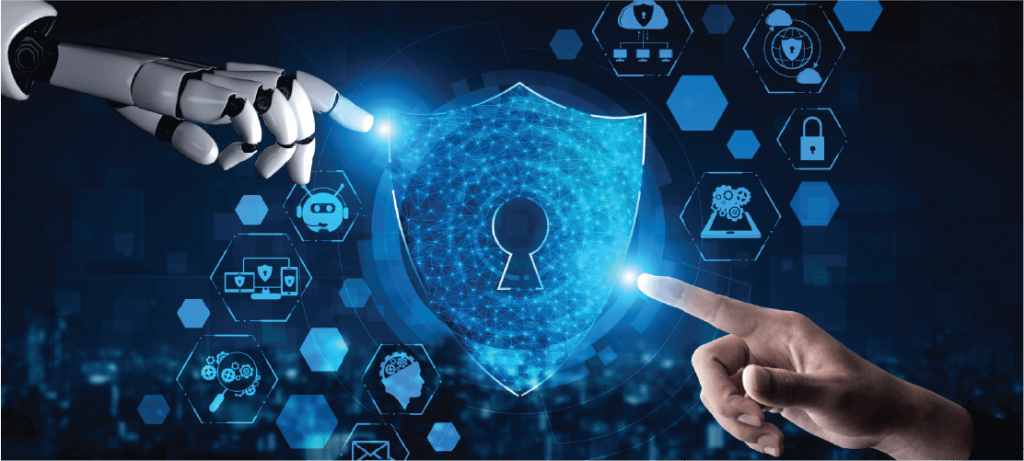In the present era, technology has become the epicenter of our world. Whether it is the consequence of the pandemic compelling us to shift our daily activities online or the natural progression towards more advanced technologies, our lives now revolve around the internet and our mobile devices. Unfortunately, this dependence also creates a larger surface area for cyber criminals to exploit and gain unauthorized access to our personal and business information. From social media platforms like Instagram to intricate business networks, it is imperative to bolster security measures to combat these ever more malicious attacks. Artificial Intelligence holds immense potential in providing the necessary security to safeguard our most cherished possessions.
Early Days of AI in Cybersecurity
AI has been involved in the field of cybersecurity since its inception, primarily focusing on automating repetitive tasks and fortifying defenses against common threats. By employing rule-based systems and signature-based detection methods, AI successfully automated processes like spam filtering and malware detection. These early applications effectively demonstrated how AI can mitigate human errors and enhance operational efficiency. For individuals interested in furthering their expertise in cybersecurity, exploring the best cyber security certification courses would be beneficial.
Machine Learning Takes AI to the Next Level
Machine learning’s emergence marked a significant milestone in the progression of AI for cybersecurity. Through the utilization of machine learning algorithms, AI acquired the capacity to analyze vast quantities of data, identify patterns, and deliver accurate predictions. Within the domain of machine learning, behavioral analytics proved to be an invaluable tool in recognizing unusual user behavior, identifying insider threats, and uncovering previously undiscovered variations of malware.
This evolution has underscored the importance of incorporating AI and machine learning into cybersecurity education and training programs. Modern cybersecurity courses are increasingly integrating modules on AI and machine learning to equip professionals with the skills necessary to navigate this advanced landscape. The integration of AI in cyber security course reflects the industry’s recognition of the critical role these technologies play in the ongoing battle against cyber threats.
Enhanced Cyber Threat Detection
As the complexity of cyber threats grows, AI-powered systems have evolved to effectively combat them. Modern AI algorithms excel in real-time analysis of network traffic, log files, and user behavior, enabling the accurate detection of suspicious activities including DoS attacks and complex phishing schemes. By utilizing techniques such as anomaly detection, clustering, and predictive analytics, AI enhances early threat detection, minimizes response times, and mitigates potential damages.
AI Vastly Improves the Authentication Process
The authentication of users has always been a formidable challenge in the field of cybersecurity. Virtually all online business from travel companies, online banking, online casinos, to creating a social media profile, requires robust authentication measures. However, the emergence of AI-driven behavioral biometrics has introduced an innovative solution. This solution involves analyzing unique patterns such as typing rhythm, mouse movements, and touchscreen interactions. Through continuous monitoring of these behavioral attributes, AI can effectively detect suspicious activities, thwart attempts to take over user accounts, and enhance security measures while ensuring a seamless user experience. AI factors voiceprints, facial scans in tandem with selfies for superior biometric factors.
Understanding Behavioral Biometrics
The verification of a user’s identity through behavioral biometrics involves the analysis of patterns in their activities. Whether it is the act of swiping between screens on a tablet or mobile device, the unique keystroke patterns, or the movement of a mouse or cursor on a screen, each user action possesses quantifiable characteristics that can be utilized to validate their identity. The integration of AI technology makes behavioral biometrics a practical solution for digital identity verification, as it enables real-time analysis of these patterns.
AI for Voice Recognition
By utilizing voice recognition, individuals can be identified based on their speech patterns, whether it is a specific phrase (active voice authentication) or their natural way of speaking (passive voice authentication) during everyday conversations. During the onboarding process, customers provide a speech sample, either active or passive, which AI analyzes to determine various characteristics of their voice, including tone, accent, and gender and age indicators. This information is then used to create a unique voiceprint. When the user returns, AI compares their live speech with the voiceprint to authenticate their identity.
AI’s Role in Facial Recognition
Facial authentication is a commonly employed method for verifying identities, ranging from unlocking smartphones to accessing bank accounts. When a customer activates the facial recognition feature on their device, a facial scan is taken. This scan is then analyzed by AI, which extracts the unique characteristic points and creates a biometric template.
AI compares the ID photo and date with the selfie to ensure that they belong to the same genuine person. Additionally, AI utilizes liveness detection to examine the selfie for signs of “liveness,” confirming that it is an image of a real, living human. If all the verifications are successful, AI generates the faceprint, allowing the customer to access their account using facial recognition.
The Future of AI in Cybersecurity
As cybercriminals increasingly exploit AI, businesses find themselves confronted with a new era of threats. Nevertheless, by effectively employing AI to outmaneuver these criminals, companies can safeguard their systems and data, ensuring resilience against future attacks.

